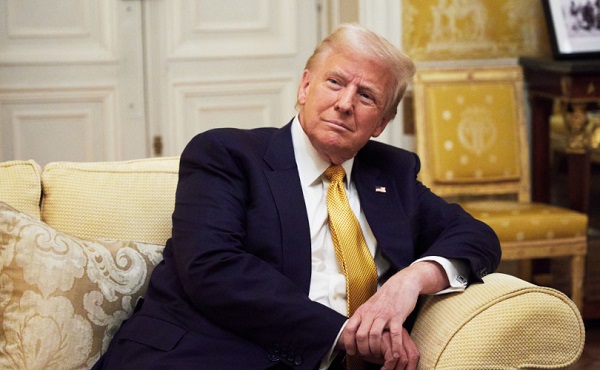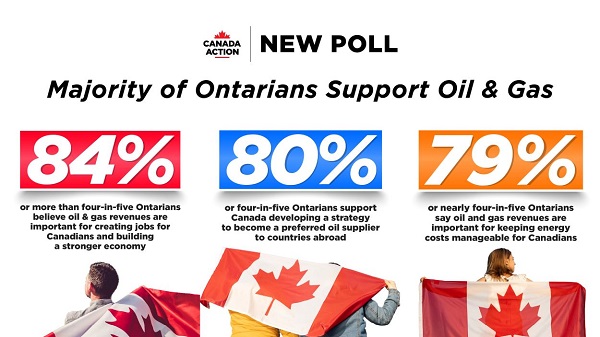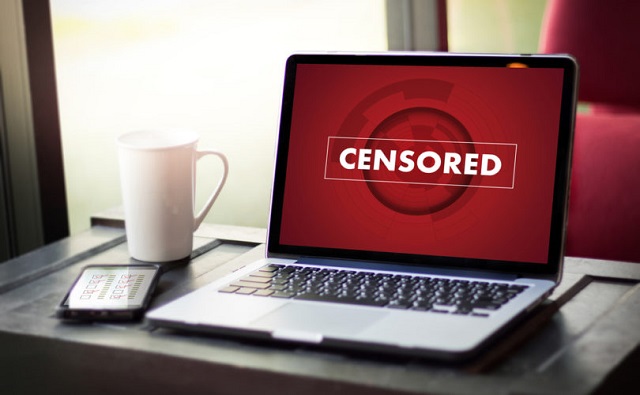International
Talk of ‘pre-emptive pardons’ sets the stage for Trump to drain the Washington swamp

President-Elect Donald Trump reacts during his meeting with Prince William, Prince of Wales at the Embassy of the United Kingdom’s Residence on December 7, 2024, in Paris, France
From LifeSiteNews
Once you understand how Donald Trump is assembling his White House and once you accept the mission of the DC system to defend itself by isolating a weak spot in the mechanism, then the assembly of cabinet based on loyalty makes sense.
Any time the professional leftists lose anything, they immediately become victims. Whether defeated in the battle of ideas (retreat to safe spaces), defeated in the field of pop culture, or even defeated linguistically through debate (words are violence). Whenever the professional left loses, they immediately become victims. It’s what they do.
The professional political left, newest version from the Chicago spawn of Dohrn/Ayers, has been waging full combat lawfare via a weaponized government for the past 16 years. However, Obama/Plouffe were defeated, “their kind” rose again and won the 2024 U.S. presidential election.
What we see in this “pre-emptive pardon” narrative, is a repeat of the victim narrative. This time the White House discussion boils down to “lawfare agents must be protected from any retaliation for their action.” Pardons presumably provide the mechanism to protect the victims. In the big picture of ideology, this is a continuation of the same mindset.
Politico started the narrative with an outline saying the White House was having an internal debate as to whether Joe Biden should pre-emptively issue pardons to members of the January 6 committee, members who constructed false impeachment accusations, members within the DOJ who fabricated political cases using the special counsel process, or generally people on the political left who supported/facilitated all the aforementioned false attack fronts.
As the narrative is told, all those who supported the attacks against President-Elect Donald Trump and his allies now need to be protected from “retribution.” Inherent in the argument, and within the use of pardons, is the baseline that some form of illegal activity was taking place. Heck, if it wasn’t unlawful conduct, then no pardon would be needed. This is the political catch-22 created by the pre-emptive pardon narrative.
Various congressional people, DOJ insiders, White House liaisons, State Department officials and underling staff are all possible recipients if Joe Biden decides to take this unprecedented approach. However, if you look at the expressed approach indicated by Trump and the assembly of cabinet members who would be in place to carry out such “retribution,” you will not find any indication of intent. Quite the opposite is true.
Trump does not appear to be in alignment with any approach that would lead to legal indictments, arrests, charges or other legal accountability measures. Beyond the public release of hidden, perhaps classified information that might put sunlight on the previous activity by those who weaponized their offices, there is nothing. Sunlight on prior events, while moving forward to restore functioning law and order, appears to be the most likely approach. From Politico:
… White House officials, however, are carefully weighing the extraordinary step of handing out blanket pardons to those who’ve committed no crimes, both because it could suggest impropriety, only fueling Trump’s criticisms, and because those offered preemptive pardons may reject them.
The deliberations touch on pardoning those currently in office, elected and appointed, as well as former officials who’ve angered Trump and his loyalists.
Those who could face exposure include such members of Congress’ Jan. 6 Committee as Sen.-elect Adam Schiff (D-Calif.) and former GOP Rep. Liz Cheney of Wyoming. Trump has previously said Cheney “should go to Jail along with the rest of the Unselect Committee!” Also mentioned by Biden’s aides for a pardon is Anthony Fauci, the former head of the National Institute of Allergy and Infectious Diseases who became a lightning rod for criticism from the right during the COVID-19 pandemic.
The West Wing deliberations have been organized by White House counsel Ed Siskel but include a range of other aides, including chief of staff Jeff Zients. The president himself, who was intensely focused on his son’s pardon, has not been brought into the broad.
In addition to their professional victim approach, the one constant with the Marxist left is their use of projection. They weaponized government, so they anticipate the target of their weaponization efforts, Donald Trump, will return fire in kind. Again, I highly doubt it.
All outward indications are that Trump wants to create a legacy presidency for the Gen-Z generation (Barron), similar to what was created by Ronald Reagan for the Gen-X generation. Selecting Susie Wiles as chief of staff is the strongest indication of this intent.
The appointments to White House legal counsel positions and main justice legal offices by Trump all appear to have one common denominator: to protect the president. I strongly doubt there will be any effort beyond that.
Big picture
Once you understand what Trump is assembling (the phalanx) and once you accept the mission of the D.C. system to defend itself by isolating a weak spot in the mechanism, then everything from the assembly of the cabinet to the process being discussed makes sense.
Within a phalanx, if one shield drops the entire construct is compromised. The strongest shields need to surround the core with ferocity.
The recent Supreme Court decision affirmed the president of the United States as the unitary, plenary power that controls every mechanism of the executive branch of government, and as long as the president is acting within his “official duty” he holds absolute power and absolute immunity.
Think of each cabinet member as a shield in this political phalanx that surrounds the weapon, Trump.
Yes, the phalanx is by construct an offensive fortification used to advance upon the enemy. However, the strength of the phalanx is its ability to be impervious to attack from 360°.
The phalanx advances, inch by inch, against a larger fortification. In the transition team assembly, this is what Trump is putting together.
Hegseth is a key component of the phalanx, the fortification process that puts Trump at the center of the cabinet. Each component of the cabinet protecting the center.
The phalanx is the mechanism to carry the weapon that is President Donald Trump. The D.C. UniParty is looking for a weakness in the phalanx, like a wolf circling a porcupine.
Trump has turned his focus to the “war fighters,” the men and women who carry out the mission objective of the Defense Department. The nomination of Pete Hegseth represents the confrontation of a power struggle that has been decades in making.
The self-serving senators are trying to block Hegseth, while maintaining a position of pretending support for Trump. The DeceptiCon republicans in the Senate are in full circling mode, looking for a weakness to exploit.
The schemes of the conniving Republican senators are transparently visible in the efforts of Senator Joni Ernst, who is circling the phalanx Trump is creating – while simultaneously inserting herself into the DOGE (Department of Government Efficiency) mission.
Ernst is doing Mitch McConnell’s work, under instruction from John Thune and Mitch. See Ernst with clear eyes.
One does not become unattached to corrupt intent.
Clear eyes!
I did not think President-elect Trump had the accurate laser vision for the task.
I was getting concerned.
Then I saw the very specific wording of this:
The McGinley move makes a lot of sense. DOGE and the Office of Management and Budgets (OMB) are going to be joined at the hip. They are going to have to navigate the Impoundment Control Act, challenging the system that places limits on a president’s ability to unilaterally withhold funding.
Inside that legal battle, deciding what DOGE can do without legislative approval, the OMB is going to be the execution part. McGinley will be the legal liaison focused on what technical approaches DOGE/OMB can execute. In essence, can they stop funding XX, thereby eliminating it?
That said, that’s not the important part.
The language Trump is using to describe the role of David A. Warrington, the switched White House counsel, is something entirely new.
Donald Trump says: “to serve as Assistant to the President and Counsel to the President. Dave will lead the Office of White House Counsel and serve as the top attorney in the White House.”
Normally the White House counsel does not represent the interests of the president, the WHC represents the interests of the office.
It would appear to me, at least as I review the details, that Trump is now fully aware how his presidential interests can sometimes conflict with the interests of the White House counsel, and he is making a move to ensure that conflict doesn’t happen.
An example of the conflict I have explained repeatedly in the “declassification of information.”
Not kidding, it is almost as if someone very close to Trump read something I previously outlined, because it came with a serious warning borne out of years of frustration:
In Term-1 the IC message to the WH Counsel was that if Donald Trump declassified any documents, they would use the DOJ (special counsel weapon) to attack the office of the president for “obstructing justice.” The WHC was fraught with fear over what would happen and demanded that POTUS Trump stop trying to declassify information/documents the IC didn’t support.
The way Trump is now portraying the role of the White House counsel is to represent his interests first and foremost, then represent the interests of the office. In a few subtle, and not so subtle ways, this makes sense.
We can tell by the nominations to attorney general, deputy attorney general, and assistant attorney general-national security division, that main justice is already positioned to defend and protect Donald Trump. The people in charge of the silo are all loyalty-first people, aligned in the interests of Trump.
It would appear that Trump is now bringing that same outlook into the White House. The White House counsel aligning in common purpose, with the specific purpose of executing the intentions of President Donald Trump.
I’m glad to see this approach, because as I have repeatedly affirmed, only President Trump (the person) can confront the silo system in Washington, D.C.
That’s why the phalanx makes sense.
Reprinted with permission from Conservative Treehouse.
Business
Federal funds FROZEN after massive fraud uncovered: Trump cuts off Minnesota child care money

The Trump administration has cut off all federal child care payments to Minnesota, ordering a sweeping audit of the state’s day care system as investigators dig into what officials describe as one of the largest fraud schemes ever tied to social service programs.
“We have frozen all child care payments to the state of Minnesota,” Deputy Health and Human Services Secretary Jim O’Neill wrote Tuesday afternoon, saying the move comes after mounting evidence that taxpayer dollars were being siphoned to sham or non-operational day care centers. The freeze follows a viral investigative video that put a national spotlight on facilities across Minneapolis that were receiving large sums of public money despite appearing closed or barely functioning.
According to Alex Adams, assistant secretary at HHS’s Administration for Children and Families, Minnesota has already received roughly $185 million in federal child care funding this year alone. Those funds, the administration says, will remain locked down until the state can demonstrate that payments are being used lawfully. “Funds will be released only when states prove they are being spent legitimately,” Adams said.
We have frozen all child care payments to the state of Minnesota.
You have probably read the serious allegations that the state of Minnesota has funneled millions of taxpayer dollars to fraudulent daycares across Minnesota over the past decade.
Today we have taken three actions… pic.twitter.com/VYbyf3WGop
— Deputy Secretary Jim O'Neill (@HHS_Jim) December 30, 2025
O’Neill accused Minnesota officials of allowing abuse to fester for years, alleging the state has “funneled millions of taxpayer dollars to fraudulent daycares across Minnesota over the past decade.” To halt further losses, HHS outlined a series of immediate enforcement steps. Going forward, states seeking reimbursement through the Administration for Children and Families will be required to provide receipts or photographic proof documenting how funds are spent.
The department has also formally demanded that Gov. Tim Walz order a “comprehensive audit” of the day care centers flagged by investigators. O’Neill said the review must include attendance records, licensing documents, complaints, investigative files, and inspection reports. He pointed directly to a video published Friday by YouTuber Nick Shirley, who visited multiple Minneapolis-area centers listed as receiving millions in public funds but found locations that appeared closed or inactive.
In addition, HHS has launched a dedicated fraud hotline and email address at childcare.gov to encourage tips from parents, providers, and the public. “We have turned off the money spigot and we are finding the fraud,” O’Neill said, urging anyone with information to come forward.
Federal prosecutors say the scope of the alleged abuse is staggering. Authorities have already confirmed at least $1 billion in fraud tied to Minnesota child care programs, with 92 people charged so far. The U.S. Attorney’s Office has warned the total could ultimately reach as high as $9 billion as investigators continue combing through records.
The funding freeze marks one of the most aggressive crackdowns yet by the Trump administration on state-run social programs accused of lax oversight, sending a clear message that federal dollars will not flow until Minnesota can account for where the money went — and who was cashing in.
Business
Resurfaced Video Shows How Somali Scammers Used Day Care Centers To Scam State


From the Daily Caller News Foundation
A resurfaced 2018 video from a Minneapolis-area TV station shows how Somali scammers allegedly bilked Minnesota out of millions of dollars for services that they never provided.
Independent journalist Nick Shirley touched off a storm on social media Friday after he posted a photo of one day-care center, which displayed a banner calling it “The Greater Learing Center” on X, along with a 42-minute video that went viral showing him visiting that and other day-care centers. The surveillance video, which aired on Fox 9 in 2018 after being taken in 2015, showed parents taking kids into the center, then leaving with them minutes later, according to Fox News.
“They were billing too much, they went up to high,” Hennepin County attorney Mike Freeman told Fox 9 in 2018. “It’s hard to imagine they were serving that many people. Frankly if you’re going to cheat, cheat little, because if you cheat big, you’re going to get caught.”
Dear Readers:
As a nonprofit, we are dependent on the generosity of our readers.
Please consider making a small donation of any amount here.
Thank you!
Democratic Gov. Tim Walz of Minnesota was accused of engaging in “systemic” retaliation against whistleblowers in a Nov. 30 statement by state employees. Assistant United States Attorney Joe Thompson announced on Dec. 18 that the amount of suspected fraud in Minnesota’s Medicaid program had reached over $9 billion.
After Shirley’s video went viral, FBI Director Kash Patel announced the agency was already sending additional resources in a Sunday post on X, citing the case surrounding Feeding Our Future, which at one point accused the Minnesota government of racism during litigation over the suspension of funds after earlier allegations of fraud.
KSTP reported that the Quality Learning Center, one of the centers visited by Shirley, had 95 citations for violations from one Minnesota agency between 2019 to 2023.
President Donald Trump announced in a Nov. 21 post on Truth Social that he would end “Temporary Protected Status” for Somalis in the state in response to allegations of welfare fraud and said that the influx of refugees had “destroyed our country.”
-

 Alberta2 days ago
Alberta2 days agoThe Canadian Energy Centre’s biggest stories of 2025
-

 Business2 days ago
Business2 days agoOttawa Is Still Dodging The China Interference Threat
-

 Business2 days ago
Business2 days agoResurfaced Video Shows How Somali Scammers Used Day Care Centers To Scam State
-

 Business21 hours ago
Business21 hours agoDark clouds loom over Canada’s economy in 2026
-

 Business20 hours ago
Business20 hours agoThe Real Reason Canada’s Health Care System Is Failing
-

 Business2 days ago
Business2 days agoMinneapolis day care filmed empty suddenly fills with kids
-

 Business2 days ago
Business2 days agoDisclosures reveal Minnesota politician’s husband’s companies surged thousands-fold amid Somali fraud crisis
-

 Addictions17 hours ago
Addictions17 hours agoCoffee, Nicotine, and the Politics of Acceptable Addiction









